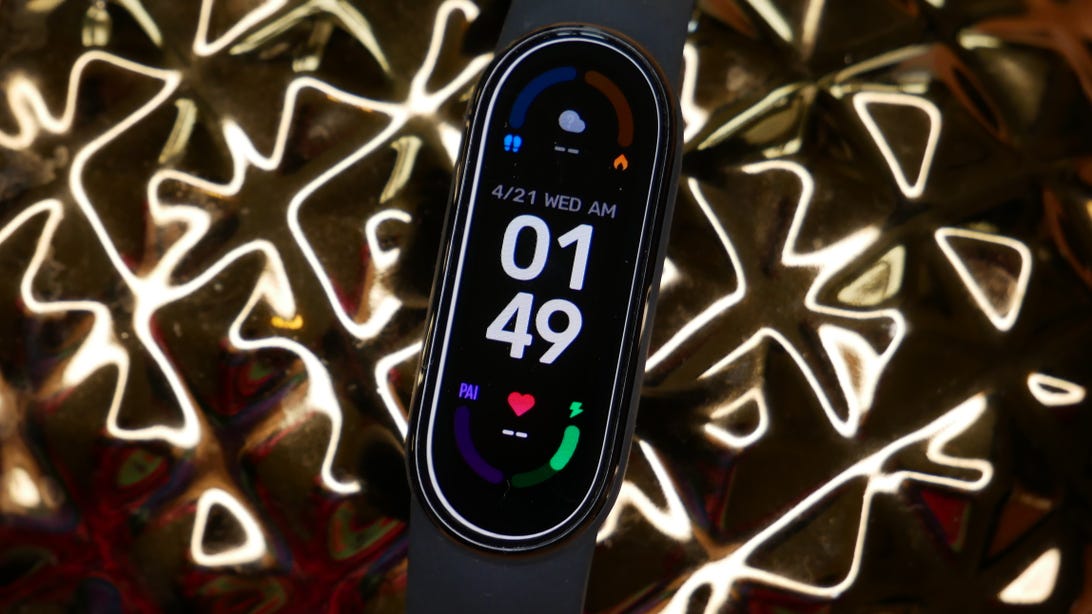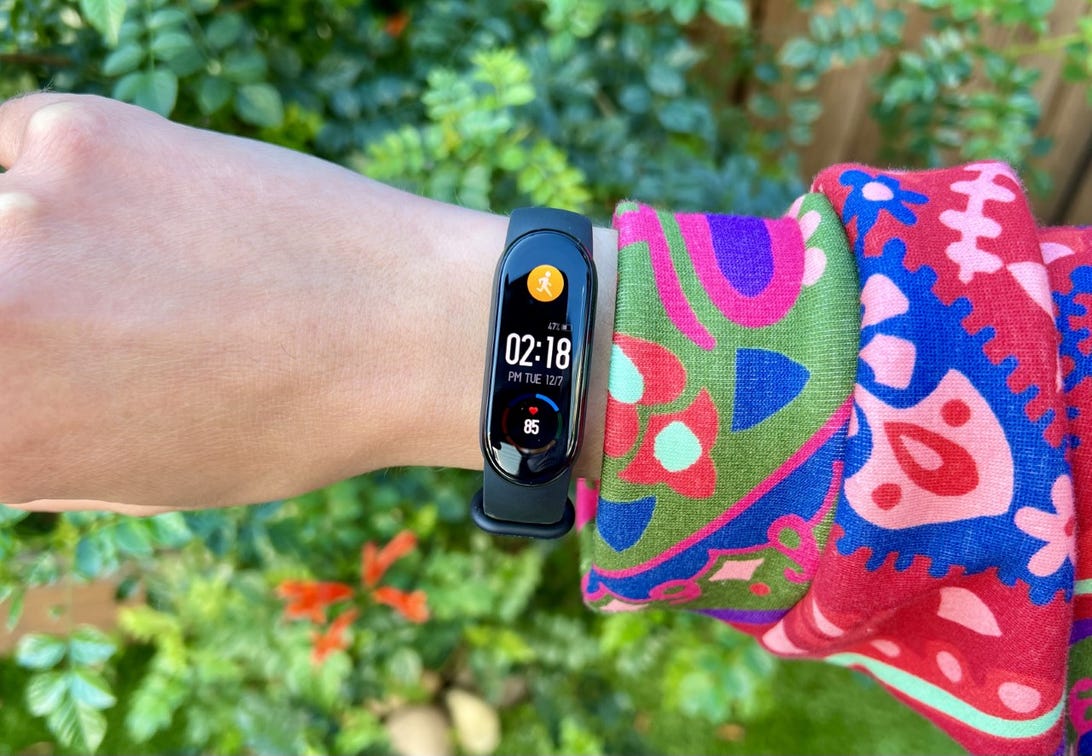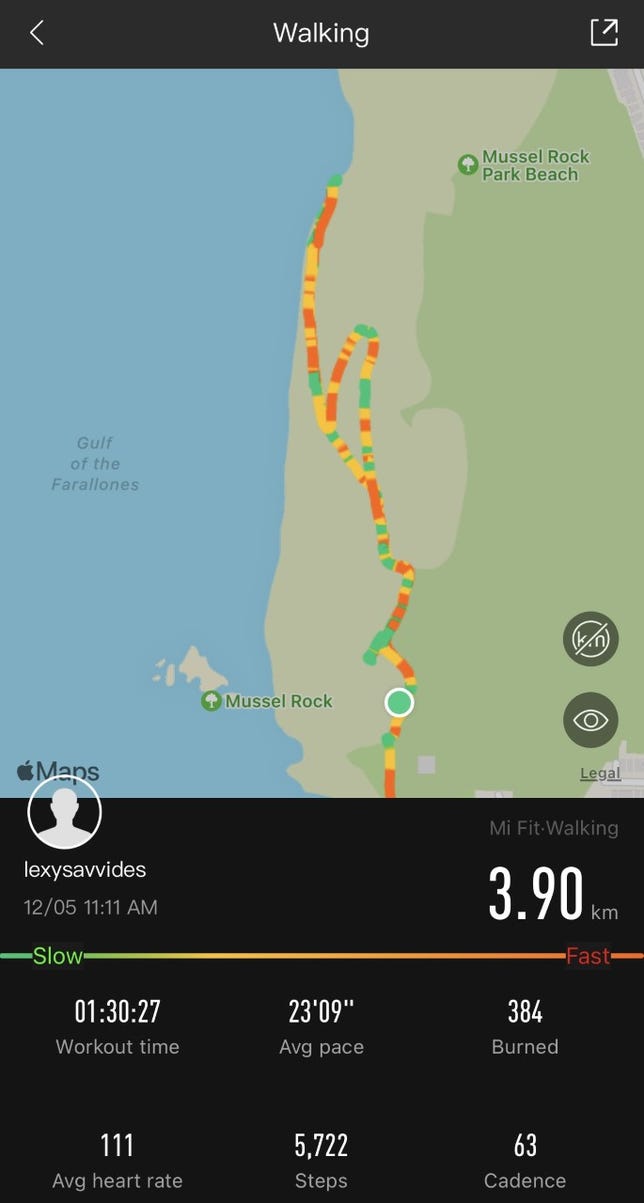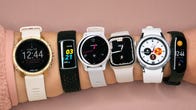Turns out you can get an amazing fitness tracker for only $45

Lexy Savvides/CNET
The best cheap fitness tracker you can buy is the $45 Mi Band 6. It’s hard to pass up if you’re on a budget but still want features like automatic workout detection, a blood oxygen sensor, sleep tracking and 24/7 heart rate monitoring. Bonus: it’s compatible with Android and iOS.
There’s no shortage of fitness bands and smartwatches under $100. The $70 Amazfit Bip S and newer Bip U are some of our favorite budget watches, but if you’re looking for something smaller, with very similar health and fitness tracking and a nicer screen, the Mi Band 6 is a great choice. I’m a big advocate for finding cheaper alternatives to big-name products, even making an entire YouTube series dedicated to the cause. Here’s why I think the Mi Band 6 is a viable competitor to similar products from big-name brands like Fitbit and the new Amazon Halo View.
A bright screen makes the Mi Band a pleasure to use
This thing is so light, I often forget it’s on my wrist. Which is a good thing in the middle of a workout when I’m trying to concentrate on my next rep, or at night when I don’t want to feel a chunky smartwatch rubbing against my pillow.
A 1.56-inch AMOLED display might sound small, but thanks to its pixel density of 326ppi, the Mi Band 6’s text and graphics look incredibly crisp. I never feel like I need to pull out a magnifying glass or squint to make out what a text message says. Most importantly, it’s easy to see the display in bright sunlight.
The screen and interface are also responsive and I haven’t experienced any performance issues or lag. One thing I’d add to the wish list for the next generation is an auto brightness sensor so it can detect the ambient light and adjust the intensity of the screen on its own.

The screen is easy to see.
Lexy Savvides/CNET
Here’s the laundry list of smart features you get on the Mi Band 6:
- Music playback control
- App notifications from your phone, plus call and message alerts
- Find my phone
- Phone muting option (Android only)
- Calendar and event reminders
- Remote camera shutter
As you can see, there’s no shortage of tools onboard and it even goes one better than Fitbit’s $180 Charge 5 by having a find-my-phone app and camera remote. While I’d like a speaker and mic so I could take quick calls from my wrist, for the price, I can’t expect that much.
The Mi Fit app is the weakest part of the whole experience. Compared with the slick experience and icons you see when navigating the band itself, the app feels like an afterthought. Even weeks later, I still take a beat to work out exactly where each feature lives, like my sleep metrics and workout stats.
On the plus side, plenty of third-party apps can tap into the Mi Band 6 to customize almost every aspect, from watch faces to remapping actions for the music control app. My favorite is AmazTools because it lets me export my workout data with GPS and map details to services like Strava.
Workout tracking on the Mi Band 6 is fine for the price

Just some of the stats the Mi Band gives you post-workout.
Screenshot by Lexy Savvides/CNET
One of my main criticisms of earlier Mi Bands was the limited range of workout tracking options. If you wanted to record a Pilates or yoga session for instance, there was only a generic “exercise” type that wasn’t particularly precise in calculating overall effort. Now, the Mi Band 6 gives you 30 fitness modes from the usual running and cycling all the way to Zumba, HIIT and indoor ice skating. It can also autodetect activities like running, walking and cycling if you forget to manually start recording the workout.
You also get sleep tracking and a blood oxygen sensor that can take a spot reading, or check it during the day and night in the background.
For the price, I’m happy with how the Mi Band records workouts. You get detailed breakdowns of your pace, splits and heart rate zones post-workout in the app. The band also tracks a physiological activity indicator or PAI score for you. It measures the amount of moderate to intense physical activity you do each day, similar to Fitbit’s Active Zone Minutes metric. The PAI score is a bit vague and trickier to understand than the Fitbit score, but I do like how it recommends what intensity workout I should do if I’m lagging behind on my score that day.
But if you’re looking for the most accurate heart rate tracker for cardio-based exercise like runs and walks, this will not be the best fit for you. During a leisurely outdoor walk with a few small hills, the Mi Band said my heart rate peaked at 180bpm — way higher than the number my chest strap said. There’s also no onboard GPS, which is not a surprise given this costs $45, so you will need to take your phone with you on workouts to record distance and route information. But that phone-assisted tracking is still a step up from the new $80 Amazon Halo View, which lacks any kind of distance tracking. I also needed to manually sync the band in the Mi Fit app every time I started a workout to get the GPS tracking to kick in, which was a bit annoying.
The Mi Band 6’s battery life takes it to the next level
I’m used to wearing smartwatches and trackers that barely last two days between charges. That’s why when I read about the Mi Band’s 14 days of battery life, I had to do a double take. Surely, that can’t be right? Turns out there’s a bit of a catch. If you’re doing a lot of workouts, using the blood oxygen and heart rate sensors frequently, plus keeping the screen brightness on high you’re more likely to reach need to charge after five days. That’s still pretty good compared with some alternatives and I can regularly get to a week and change before needing to juice it up again. I’m sure I could push it to 14 days if I was only using this to get notifications from my phone and to track steps.
The Mi Band 6 is my favorite budget fitness tracker of the year, especially if you’re just looking to dip your toes into the world of fitness wearables and want something you won’t need to charge very often.

